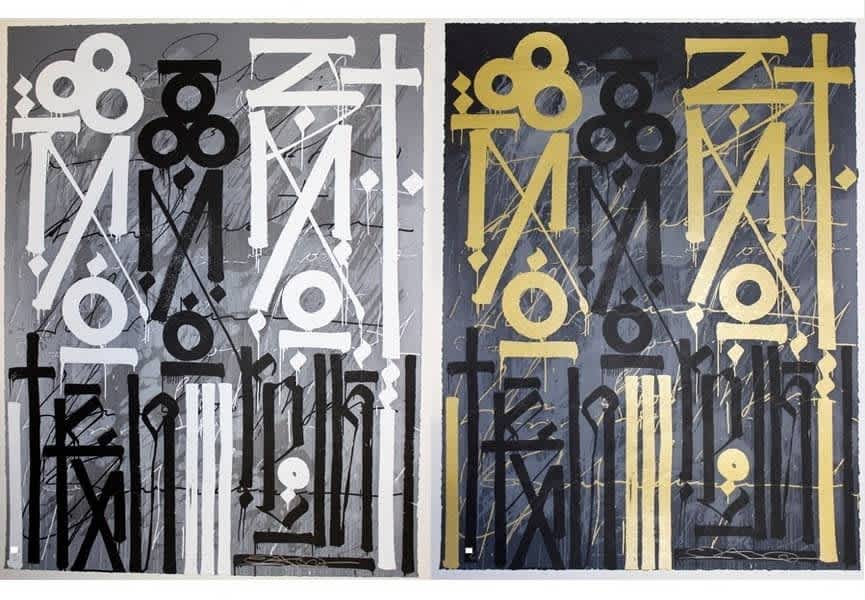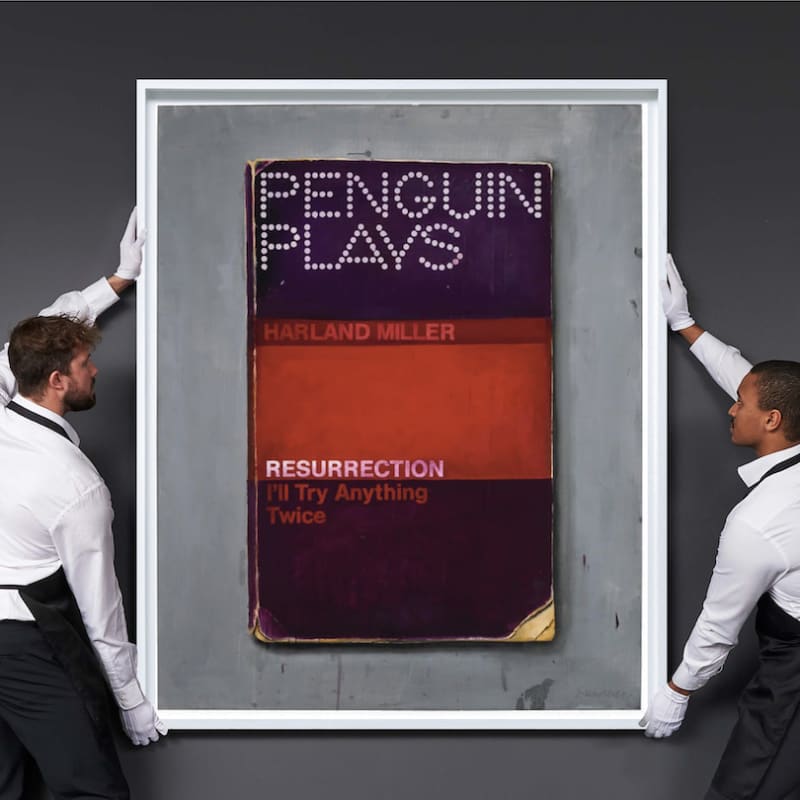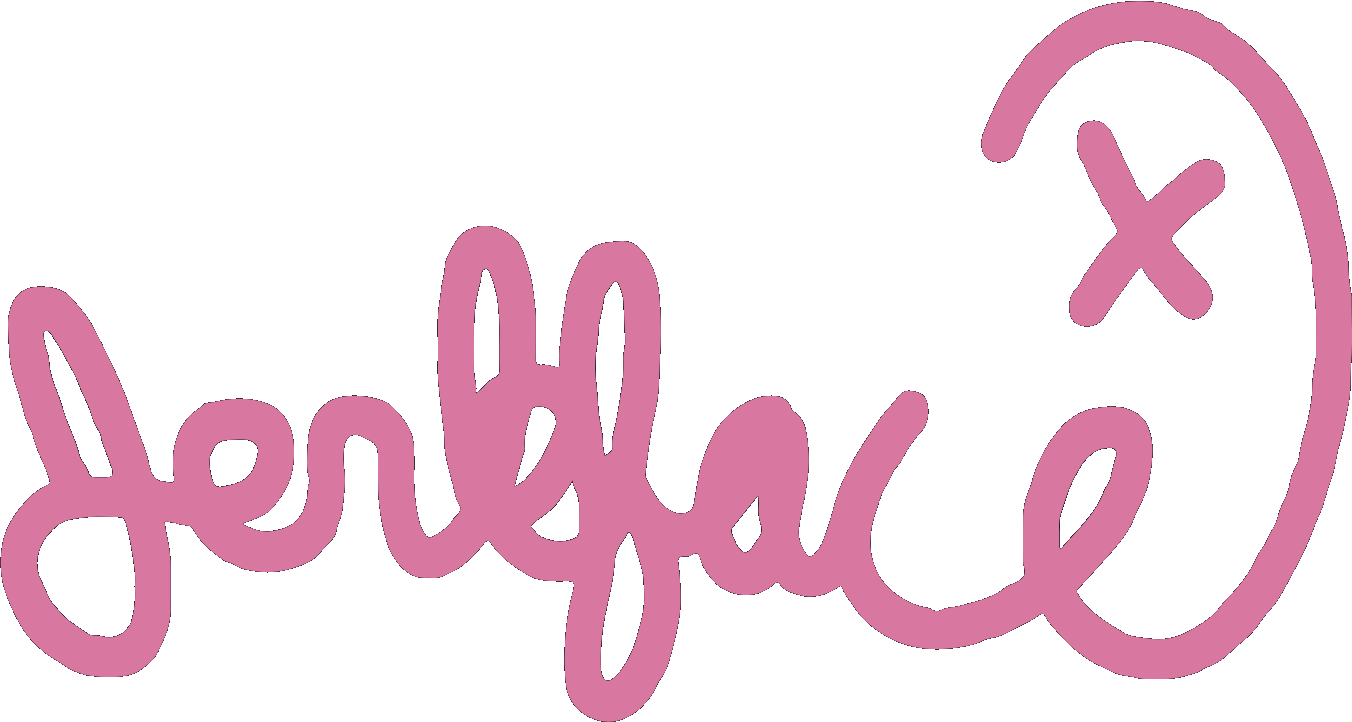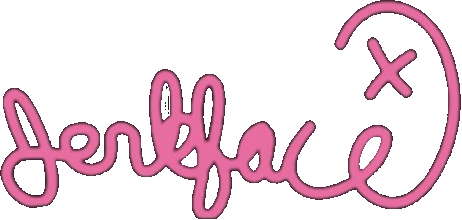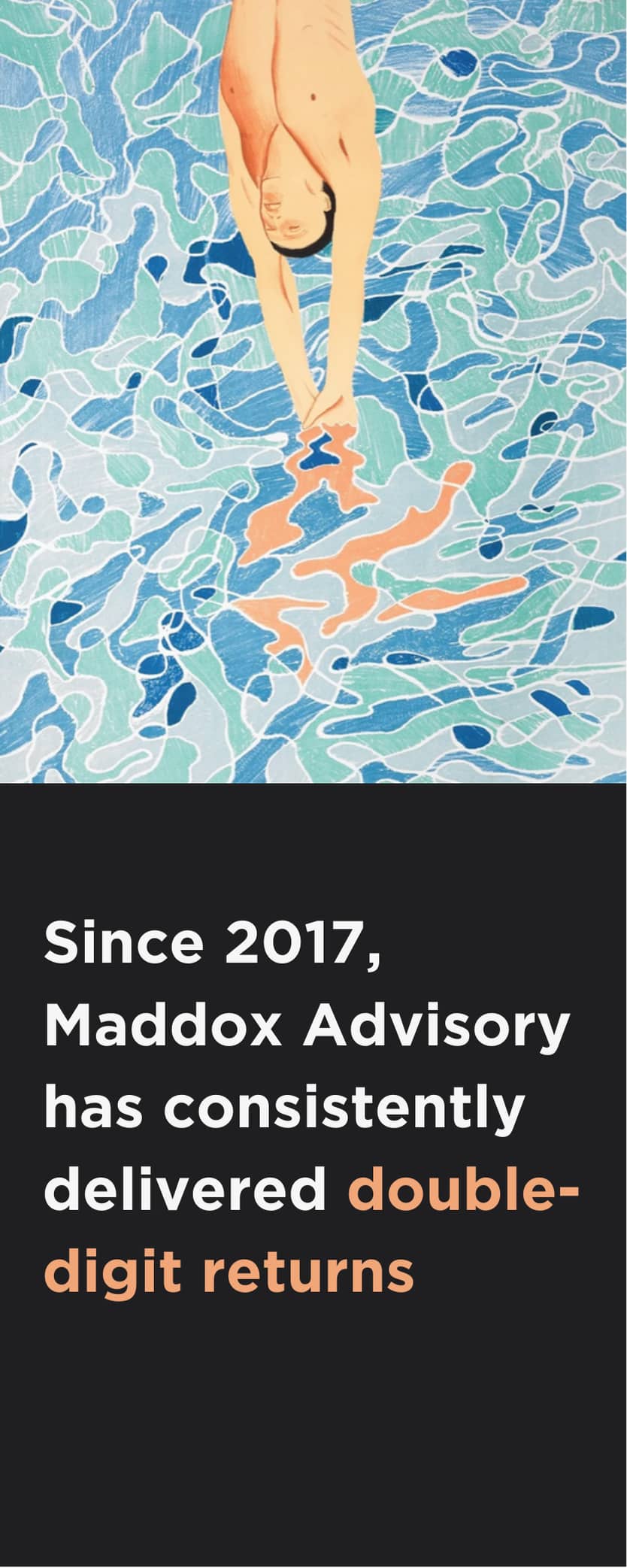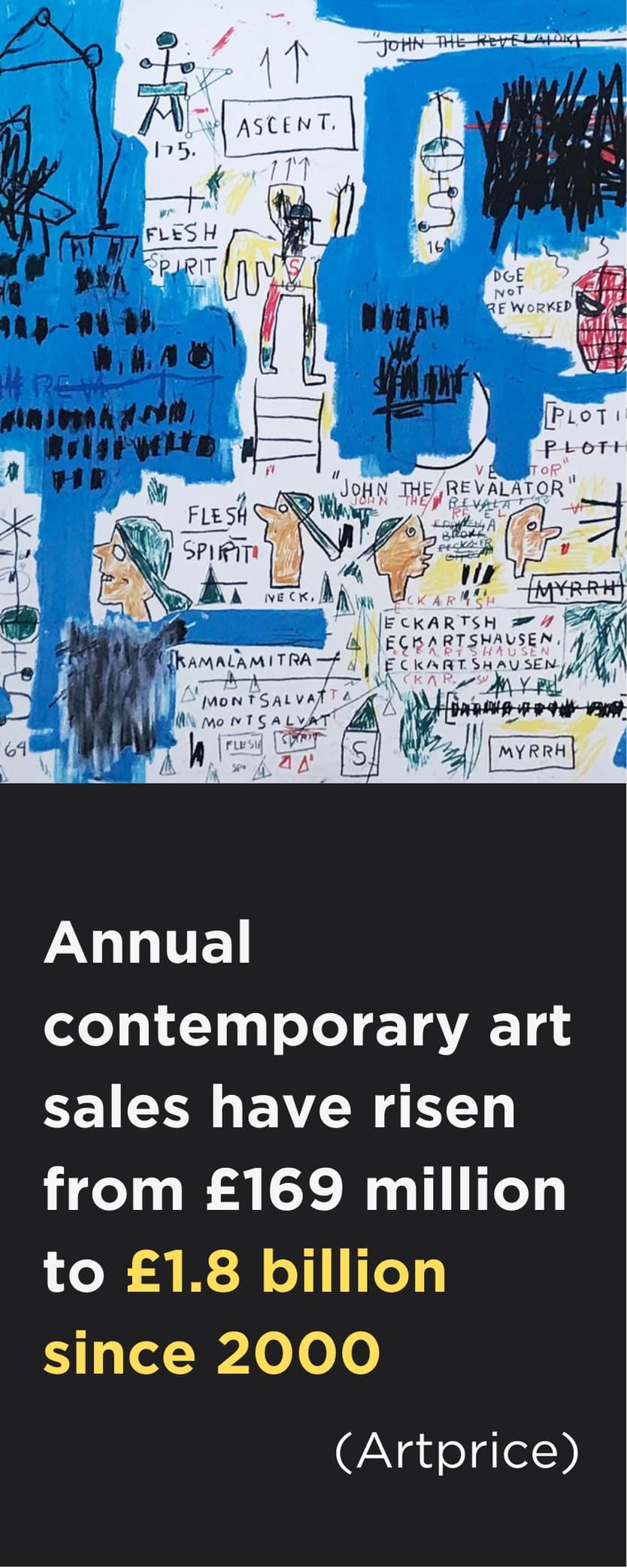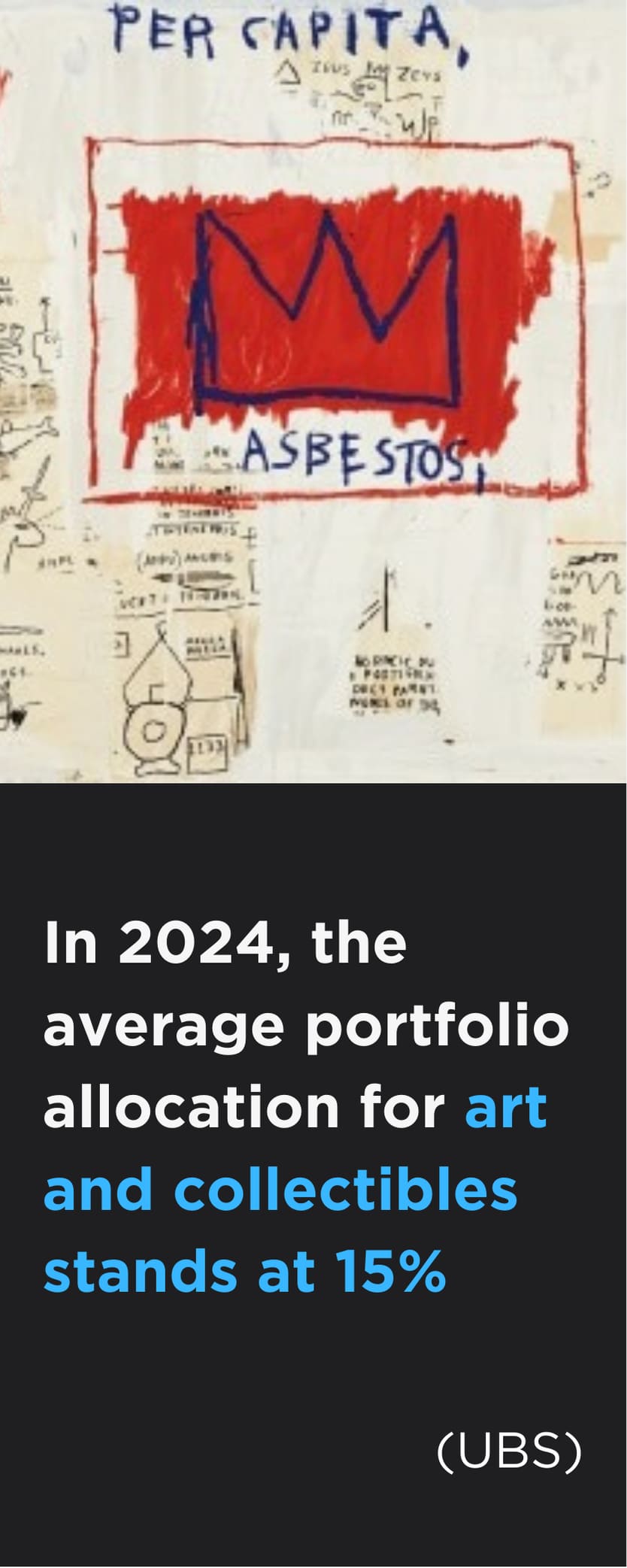In the hands of artists like Andy Warhol, Bridget Riley and Yayoi Kusama, repetition in art becomes a kind of spell. Across optical illusions, language, linework and pop iconography, these seven contemporary pattern artists reveal how recurring forms enchant the senses and awaken new ways of seeing. Their work invites us to look again—and then again—with renewed attention.
1. Yayoi Kusama and the Art of Repetition to Infinity
Yayoi Kusama, Infinity Nets (WR), 2004
Among the famous pattern artists, few have explored repetitive imagery with the intensity—or longevity—of Yayoi Kusama. For over eight decades, she has used recurring motifs, obsessive mark-making and mirrored environments to express her inner world, evoke infinity and obliterate the ego. From her signature polka dots to her travelling Infinity Rooms, Yayoi Kusama’s immersive art has captivated audiences at institutions across the globe, from Tate Modern in London, to The Broad in Los Angeles and the National Gallery of Victoria in Melbourne.
Her fixation with repeated forms stems from childhood hallucinations, which she later channelled into art as a form of therapy. “Repetition is a form of self-obliteration”, she once wrote—an attempt to dissolve the self into something infinite. This vision is distilled into three core motifs: polka dots, pumpkins and Infinity Nets.
Kusama’s ‘Infinity Nets’ series, begun in the 1950s, features vast fields of looping brushstrokes. Disciplined, obsessive and meditative, it stands as a seminal example of patterns in art, illustrating how the repetition of form can move beyond surface aesthetics to engage with deeper psychological, philosophical and spatial concerns.
What sets Kusama apart is how fully she has translated this visual vocabulary across media. Her installations envelop the viewer entirely, while her paintings, sculptures and performance works maintain a consistent language of recurrence—one grounded in both personal biography and universal symbolism. The pumpkin, for example, recurs throughout her oeuvre not only as a motif of warmth and nostalgia but as a counterpoint to the intensity of her dots. “I love pumpkins,” she once said, “because of their humorous form, warm feeling and human-like quality.” Where polka dots evoke infinity, pumpkins ground the viewer in something more tactile, familiar and endearing.
Hypnotic, enveloping and often disorienting, Kusama’s work has immense cultural cachet and market appeal. Her instantly recognisable visual language, combined with its deep conceptual resonance, makes her a cornerstone of both museum collections and private investment portfolios. Works featuring her iconic polka dots or pumpkins are among the most sought-after Contemporary artworks on the global stage.
2. Andy Warhol’s Repetition Art: Pop, Pattern and the Power of the Copy
Andy Warhol, Campbell’s Soup Cans,1969
Andy Warhol remains the undisputed icon of Pop Art repetition. Through his use of silkscreen printing and media-sourced imagery, he replicated portraits of Marilyn Monroe, Campbell’s soup cans, dollar bills and Coca-Cola bottles, transforming the banal and the familiar into high art. Not simply aesthetic choices, his repeated images were critical reflections of a culture saturated with mass production, celebrity worship and instant gratification.
Warhol often arranged his subjects in tight, rhythmic grids, echoing the visual language of supermarket displays, factory lines or stamp sheets. The effect was both hypnotic and confrontational. At first glance, the images seem identical, but closer inspection reveals subtle variations in colour, registration and tone. Using repetition in art as a conceptual tool, Warhol interrogated the boundary between the original and the copy, highlighting how repetition itself can strip an image of, or saturate it with, meaning.
“I like things to be exactly the same over and over again,” he once quipped. Yet beneath this deadpan delivery was a stinging critique of consumer culture and the mechanical nature of fame. Comprising 10 repeated yet chromatically distinct variations of Chairman Mao, Warhol’s 1972 ‘Mao’ portfolio of prints exemplifies how he used visual repetition to critique the mechanisms of propaganda, celebrity and commodification.
For collectors, Andy Warhol repetition art represents a rare combination of cultural relevance, conceptual clarity and lasting investment value. Historically important, his repetitive imagery has become as iconic as the subjects themselves. With works held in major institutions such as The Museum of Modern Art (MoMA) and the Whitney Museum of American Art, Andy Warhol’s art is central to both 20th-century art history and contemporary market demand.
3. Bridget Riley Patterns: Repetition, Rhythm and Optical Mastery
In the hands of Bridget Riley, pattern in art is used not to depict the world, but to activate perception itself. A leading figure in the Op Art movement, Riley uses repeated geometric forms—zigzags, curves, diagonals and stripes—to create artwork with repetition at its core. Her dynamic arrangements of colour and shape pulse, vibrate and shimmer, engaging the viewer’s eye and mind alike.
Her early abstract pattern, black and white paintings, such as Movement in Squares (1961), use tightly controlled repetition to generate kinetic optical effects: images that seem to ripple or warp across the canvas, despite being entirely static. With the introduction of colour in the late 1960s, Riley expanded her visual vocabulary, exploring how repeated hues could produce sensations of vibration, depth and movement. In both her monochrome and colour works, it is not just the repeated form, but its modulation—of scale, spacing or chromatic temperature—that transforms passive pattern into active experience.
Riley has described her approach as “working with nature”, not in the literal sense, but by capturing natural phenomena such as light, rhythm and flow through abstract means. Her stripes, waves and rhombus paintings—emblematic examples of repetition in art—all rely on repeated units, yet their effect is dynamic rather than decorative. The viewer becomes a participant in the artwork, caught in the push-pull of optical illusion and physical sensation.
Bridget Riley patterns hold strong collector appeal, particularly for those drawn to visual experimentation, minimalism and movement. Among the most influential repetition artists of the 20th century, her influence on contemporary abstraction is profound, with her works part of the permanent collections at major institutions including the Centre Pompidou in Paris, the Tate in London, and the Museum of Contemporary Art in Los Angeles.
4. Mel Bochner’s Bold Word Repetitions: Language, Meaning and Visual Noise
For Mel Bochner, one of the key repeat pattern artists of the conceptual art movement, words have moved beyond vehicles of meaning, becoming material to be repeated, layered and visually interrogated. Since the 1960s, Bochner has used language as both content and form, with his well-known ‘Blah Blah Blah’ and ‘Thesaurus’ series offering a graphic, often ironic take on how repetition in art can alter, and sometimes remove, meaning.
Bochner’s text-based works typically feature stencilled words and phrases arranged in stacked or grid-like compositions. Each word is repeated with slight variations in colour, spacing or expression, often moving from formal descriptors into the absurd or profane. In doing so, Bochner turns words into art, and the act of reading into a visual and psychological experience. Repetition here doesn’t soothe; it agitates, questions and overwhelms.
In works such as Top Dog and Obvious, viewers encounter a flood of synonyms, insults or exclamations rendered in bold colour fields, with the painted surface thick, textured, even confrontational. The result is an interplay between visual rhythm and semantic overload, where meaning is both emphasised and eroded by its constant reiteration.
Bochner’s practice sits at the intersection of minimalism, conceptualism and graphic design, giving his work broad collector appeal. His bold use of repetition in art, combined with his linguistic wit, ensures that each piece is both visually commanding and intellectually provocative.
5. RETNA’s Street Art Patterns: Repetition as Ritual, Script as Structure
RETNA, Esoteric Existence, 2011
Born Marquis Lewis, RETNA has developed one of the most recognisable visual languages in Contemporary art by fusing street art patterns, calligraphy and cultural symbolism into his rhythmic, repeated script. His distinctive typographic style, inspired by ancient languages, Arabic calligraphy, Gothic lettering and graffiti tags, uses repetition as both ornament and structure.
Painted freehand in looping, interlocking forms, RETNA’s compositions often appear as coded messages or sacred scripts. The repetition of these custom symbols across murals and canvases creates a powerful sense of visual rhythm that is anchored in personal mythology but resonates with broader spiritual and historical references. His patterns feel architectural yet fluid—dense with meaning, but elusive in interpretation.
While rooted in street art traditions, RETNA’s artistic style transcends genres, feeling simultaneously ancient and futuristic, urban and spiritual. In works like Secret Societies II, his language of repetition is pushed to near-abstraction, with the canvas becoming a wall of glyphs—stacked, layered and marked by chromatic restraint. The ritualistic nature of his repeated marks, whether densely packed or sparingly spaced, invites viewers into a meditative visual experience, where reading gives way to feeling.
For collectors, RETNA offers the perfect blend of street art energy and fine art refinement. His repetition-driven style is instantly recognisable, deeply layered and ideally suited to large-scale impact, whether on the façade of a building or the walls of a Contemporary art collection.
6. Lefty Out There: Pattern as Pulse, Repetition as Flow
Lefty Out There, Aura Ovale, 2024
For American artist Lefty Out There, repetition is both instinct and identity. Emerging from the street art scene, Lefty developed his now-signature motif of fluid, hook-like squiggles as a form of personal mark-making that expanded into a complete visual language. These freeform lines, repeated obsessively across surfaces from walls to canvas to sculpture, turn spontaneous gestures into intricate, all-over patterning.
His work is built on a foundational tension: organic but controlled, meditative yet urgent. The individual mark may be simple, but through repetition it forms complex, flowing systems that echo natural phenomena like cell structures, neural pathways or energetic networks. What begins as a squiggle becomes something immersive and architectural—an artwork with repetition that draws the viewer in and refuses to let go.
7. Sam Smyth’s Structured Repetition: Architectural Pattern & Precision
As an emerging artist with a distinctive visual language and a rapidly rising profile, Smyth’s work represents a compelling opportunity to invest in an artist at the beginning of what promises to be a significant career. These are works that offer more than surface perfection—they reward contemplation, revealing how rhythm, repetition and pattern in art can elevate abstract forms into something alive with energy.
What Is the Difference Between Rhythm, Pattern and Repetition in Art?
Repetition is the simplest building block: the reuse of a visual element—whether a shape, colour, line or symbol—within a composition. Artists who use repetition include Yayoi Kusama, who obsessively covers entire surfaces with dots and continuous, connected crescent-shaped brushstrokes to create her Infinity Nets. Repetition creates consistency, structure and psychological weight—it can soothe, confront or overwhelm, depending on how it’s applied.
Pattern emerges when repetition becomes organised. It implies motifs repeated with a recognisable structure, such as a grid, sequence or symmetry. Artists who use pattern in their practice include Bridget Riley, whose Op Art works rely on highly structured geometric patterning to generate optical movement. Sam Smyth’s repeated arcs and circles, meanwhile, converge in elegant, architectural patterns that ripple across the eye with musical regularity.
Rhythm is the sensation that results from repetition and pattern. It’s not just what’s repeated, but how it’s repeated: with pauses, accents, changes or flow. Rhythm can be regular or syncopated, fast or slow, predictable or disruptive. Lefty Out There’s flowing linework creates a fast, improvisational rhythm, whereas Mel Bochner’s stacked text paintings develop a visual cadence that shifts from controlled to chaotic. In both cases, rhythm guides the viewer’s gaze through the work, and their emotional response to it.
Collector Tip
Repetition is a language, and the way it’s spoken reveals much about the artist’s intent and the artwork’s impact. Understanding whether a work leans more towards pure repetition, structured pattern or expressive rhythm can help refine your taste and focus your collection. For example, a Bridget Riley might energise a space with its clearly defined, formal rhythm, while a Kusama evokes immersion and psychological depth.
What Is the Key Function of Repetition in Art?
What does repetition mean in art? At its heart, it serves to focus attention, shape perception and heighten emotional or conceptual impact. While its function can vary depending on the artist or medium, repetition acts as a powerful tool to unify a composition, build meaning and generate rhythm within a work.
In many cases, the key function of repetition in art is to offer control. It allows artists to stabilise form and create structure, as seen in emerging pattern artist Sam Smyth’s geometric compositions, where disciplined, symmetrical repetition leads to a visual sense of order and calm. For others, repetition channels obsession or personal psychology, like Yayoi Kusama’s dots and Infinity Nets—some of the most famous patterns in art.
Repetition can also serve as a form of critique or commentary. Andy Warhol’s repeated portraits of Marilyn Monroe or Mao are both aesthetic and strategic, exposing how icons are consumed and emptied of meaning through constant reproduction. Similarly, Mel Bochner weaponises repeated language in his text paintings to highlight how repetition in art can distort clarity, leading to semantic overload or absurdity.
In more tactile or improvisational practices, such as Lefty Out There’s flowing squiggles or RETNA’s repeated calligraphic symbols, repetition becomes a form of energy. A pulse that animates the work and invites an intuitive response, the visual rhythm engages the brain as much as the eye.
For collectors, recognising the function of pattern and repetition in art can offer deeper insight into both the emotional register and conceptual framework of a piece. Works that use repetition effectively often carry enduring impact. They’re the paintings you return to repeatedly, discovering more each time. Whether the intent is meditative, critical, hypnotic or explosive, repetition gives an artwork lasting presence—and, often, lasting value too.
Looking to Collect Art With Repetition?
Pattern and repetition in art is a conceptual lens, a structural device and a source of visual impact for famous repeat pattern artists and emerging talent alike. Across Op Art, Pop art, street art and abstraction, today’s most compelling repeat pattern artists use repetition to mesmerise the viewer and reveal something deeper: about perception, identity and the systems that shape us.
For collectors, artists that use patterns to create artwork with repetition—whether that’s a bold visual field by Riley or an artwork that has repetition woven into its very structure, like Kusama’s Infinity Nets—offer both stylistic boldness and long-term resonance. They create rhythm in a room, hold attention over time and reward repeated viewing.
As diverse in form as it is rich in meaning, the visual language of repetition in art is celebrated in institutions from MoMA to the Tate—and explored in depth at Maddox Gallery.
Collector Insight: The Appeal of Pattern and Repetition
Artworks that use repetition and pattern offer strong visual impact and conceptual depth—qualities that resonate with seasoned and emerging collectors alike. Understanding the difference between repetition, pattern and rhythm can refine your collecting eye and guide smarter acquisitions. Maddox Gallery advises focusing on artists whose structured or expressive use of repetition aligns with both your aesthetic and long-term investment goals.
